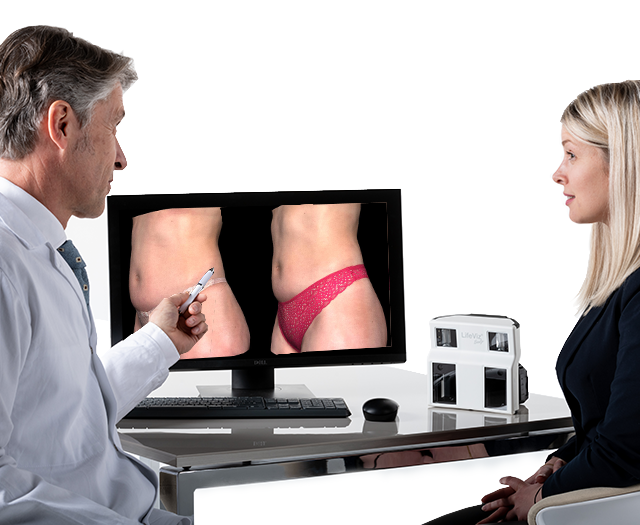In aesthetics, photographs are an invaluable method used for documentation and visual tracking in consultations. Photos enrichen and liven up the use of mundane words or text. As aesthetics is a very visual specialty, the representation of patients should be as close as possible to reality and of high quality.
Great before and after photographs helps to attract new patients and better convert them. Ideally, these images should be high-quality and portray an accurate representation of a patient over multiple visits. Documentation of a patient’s treatment journey has been found to be extremely impactful, but only if done correctly. In order for before and after images to be precise and reliable, standardization is vital.
– Lighting
Background color and lighting are two factors that must remain consistent. To ensure this, it requires dedicating an exam room as a photo studio, purchasing professional flashes and photographic equipment and consistently closing windows and blinds to achieve reproducible lighting.
– Distance from Patient
The distance between the photographer and patient should remain fixed to avoid images being too far or too close. To ensure the same distance and patient positioning over multiple visits, placing a sticker on the floor as a marker is a simple way to acquire reproducible images without a cumbersome repositioning system.
– 2D Jpeg Pictures
Images obtained with a conventional SLR camera portray flat illustrations of reality. When images are used as a way to photo document medical aesthetic changes, seeing and assessing volume changes are pivotal. This is very difficult to achieve with a regular camera or a cell phone.
The 3D LifeViz® cameras are a viable solution to obtaining the quality, standardized images desired. They are equipped with double flashes to ensure consistent lighting and good overall image reproducibility. Additionally, these cameras contain dual-beam pointers for accurate image comparison so the physician knows the correct distance to stand from the patient.
Incorporating a camera capable of producing 3D images into consultations gives the physician a global image of the patient. It ensures that the physician can visualize the patient from multiple view points and at different zoom levels, without dedicating an entire room for photo taking. Capturing standardized images while incorporating the above key elements will have a positive impact on the way you perform consultations and communicate with your patients.

